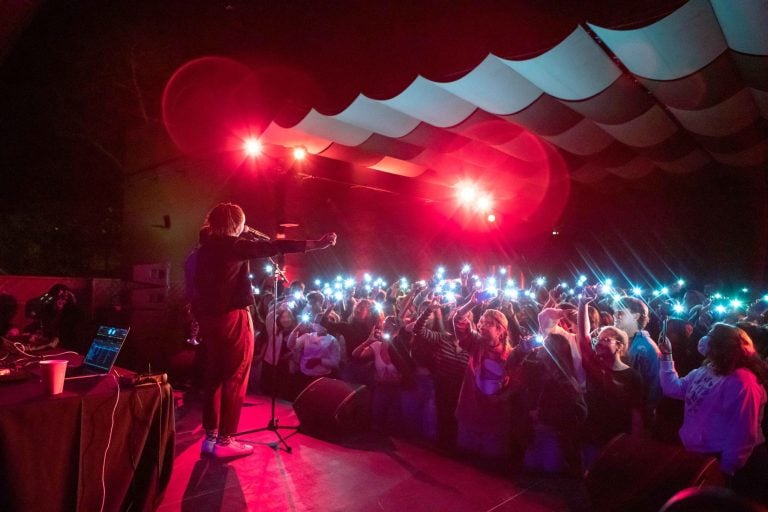For the first time in its history, the Stanford Concert Network (SCN) is spearheaded by an all-female leadership team. Directors Kimberly Batdorf ’22, Mira Guleri ’23 and Caroline Hallee ’22 spoke with The Daily over email about how they’re handling Stanford’s unprecedented excitement for the return to live music.
The SCN team said they are well aware of the gender imbalance that pervades every facet of the music industry. A recent study conducted by the USC Annenberg School found that only about one in five popular music artists are women. Even worse are the figures for songwriting and production, where female producers can be outnumbered by as many as 38 to one; just as with film, the music industry seems to accept female talent while simultaneously keeping women out of creative control. Batdorf said that she’s excited to work with her co-directors to shape inclusive spaces, whether in SCN’s internal meetings or at their shows.
“As a CS major, I thought I had my fair share when it came to gender imbalanced spaces, but I’ve quickly learned that the music industry is the same way, whether you’re talking about execs or what performers are being booked,” Batdorf wrote. “Entering the music industry can be extremely intimidating for those coming from marginalized backgrounds, and my hope is that we can be a welcoming team toward whomever is passionate about music and wants to learn more.”
The directors have looked to diversify the musical styles of booked artists in conjunction with their diversified leadership team, according to Hallee. Incorporating high-energy genres like reggaeton, rap and punk into this year’s lineup, the directors hope to match the Stanford community’s excitement about coming back to campus.
“Working with SCN is a huge privilege that comes with the responsibility of representing the student body well, and we are always excited to uplift rising artists and to offer them a stage — especially those artists who may not be well-represented,” Batdorf said. “It’s definitely exciting to have the opportunity to redress the disparities that exist in the world of music.”
Despite complications presented by COVID-19, SCN maintained its operations last year. Live-streamed shows on YouTube and Twitch replaced in-person concerts, requiring SCN and its leadership to relearn large portions of the concert-production process. Still, Hallee wrote that the switch to virtual planning “allowed our team to be more creative in thinking about what a concert can look like.” Their pandemic introduction of co-sponsored concerts — collaborating with organizations like Stanford Basic Needs and the Office for Spiritual and Religious Life — opened many doors for the group; co-sponsorships are set to become an SCN norm going forward.
Now on campus, SCN has been working tirelessly to meet students’ demand for live performances. Their first concert, featuring Ric Wilson, had to close admission after exceeding the 250-guest limit.
“Resuming the club in person this year has required extra legwork, but has been doubly exciting and rewarding,” Guleri said. “I was particularly eager to direct this year because of the build-up and excitement in the concert space, at Stanford and otherwise, for the first shows since COVID. I know everyone missed live shows, and I wanted to be leading the team working doubly hard to make up for lost time.”
Hallee has also noticed a growing campus interest within SCN: “Our first few meetings have been packed, and we’re working to channel this energy into building strong teams of new members and a full calendar of shows.”
Still, the club’s plans and aspirations for the upcoming season are continuously expanding. In addition to curating live music, Batdorf is shifting its focus to rising Bay Area musicians: “We hope that we can make our campus feel a little less like a bubble while also giving back to our surrounding communities by offering a stage to local artists.”
